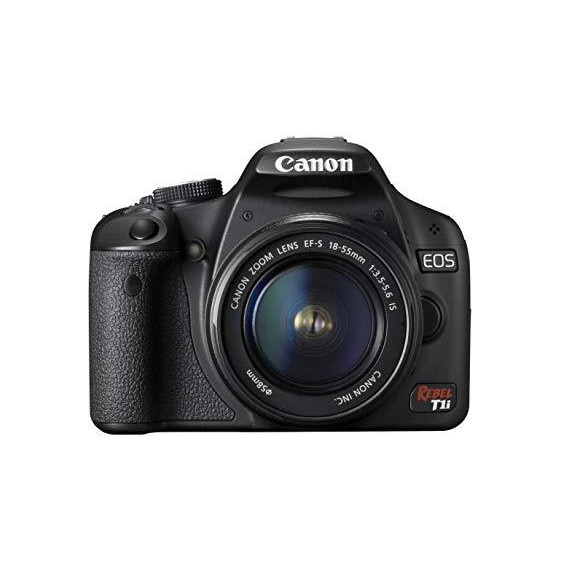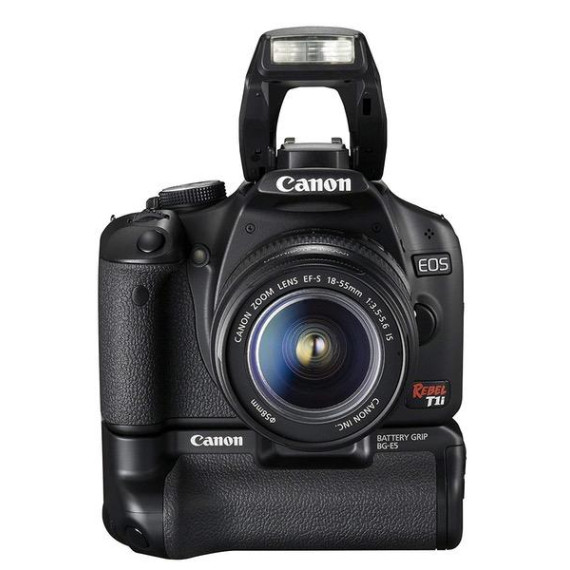Rimesh Patel
Ive had the T1i for about almost week now and after some extensive use, here are my thoughts: 1. 15.1 megapixel sensor. Yes, the high megapixel count is impressive, but keep in mind that, as you approach higher resolutions, you need to ensure the lens on the SLR can resolve that much detail. Sadly, the included 18-55mm IS lens is functional, but the high resolution really shows the so-so quality of the lens. Even if taken at the proper focus, pictures can appear soft with this kit lens. Shots I have taken with Canon EF-S 17-85mm and EF 70-200mm L lenses are crisp. I dont have any gripes on image quality. There are some issues with noise on the higher ISOs that dont seem to show up on the Nikon digitals, but overall, the quality is amazing for the price. Skin tones, textures, colors are reproduced very accurately. 2. Digic 4. The Digic 4 processor appears to process/save the 15 megapixel images in the same time (if not faster) than the Digic III processor on the XSi (even in RAW+Jpg mode). I have also noticed that at higher ISOs, the sensor and the Digic 4 produce images with less overall noise compared with its predecessors. 3. LCD. The 920,000 pixel LCD screen is large (3"), crisp, vibrant and fully visible even in bright sunlight. In comparison, the Canon XSi SLR (which the T1i replaces), also has a 3" LCD, but with 230,000 pixels. The viewing angle is great as well and the LCD can easily be seen nearly 180 degrees around. 4. ISO 12800. Canon and Amazon are correctly identifying that the T1i maxes out at ISO 3200. Some less reputable dealers are listing an ISO 12800, which you should disregard. The ISO 6400 and 12800 settings are expanded ISO settings. The pictures taken on these two settings are ISO 3200 images pushed to ISO 6400 or 12800 by the Digic 4 chip before saving to the memory card. These pictures are extremely grainy and contain a lot of noise to the point of only being usable as for snapshots or adding an artistic effect to certain compositions. 5. Penta-mirror. That Canon is still using one in the T1i is disappointing. The penta-mirror viewfinder image is functional, but still noticeably darker than that of the penta-prism viewfinder in the Nikon D90 (which is the T1is main competitor). I really would have preferred if Canon had kept the XSis 12.2 megapixel sensor, forgone 1080p video altogether, and maybe upped the cost of the camera slightly to cover the production cost of using a penta-prism in the T1i. Honestly, unless you are massively cropping your images, or creating large photos, the difference between 12.2 and 15.1 megapixels really is negligible. 6. Size. This is the same body as the XSi, and therefore a bit on the smaller side compared to other digital SLRs. I have small hands, so the T1i is comfortable for me. If you have big hands, I can see this being a very difficult camera to use over an extended period of time. If you havent handled a Canon XT, XTi or XSi, I would suggest you go to a store and hold the T1i yourself before purchasing it online. (I will upload a picture of the T1i in my hands to the user gallery for a size reference.) 7. HD Video. Yes, the Canon marketing department made a horrible marketing decision and pushed the T1i onto shelves limiting the 1080p recording to 20fps (frames per second). Recognize this as a marketing gimmick that allows them put a 1080p sticker on the camera box. The 1080p @ 20fps is fine most times, but seems a choppy if you have a lot of action in the frame or are panning quickly. The T1is 720p video is recorded at 30fps and is clean, smooth, and sufficient for all but the most discerning consumers. One major criticism though is that the sound is recorded in mono, AND there is NO input for an external microphone. A lot of pre-production reviews of the T1i criticize its inability to automatically autofocus while recording. I wouldnt put much weight in this criticism, mostly because neither of the other two SLR cameras with HD recording capabilities (Canon 5D Mark II and Nikon D90) can automatically autofocus while recording either. What you can do with the T1i is pan/zoom the lens and then press the AE lock (*) button to make the camera autofocus on the new subject (all while recording). A problem with using the AE lock button to have the camera autofocus is that the microphone for the camera is on the front upper left of the body near the lens mount. Therefore, the lens motor noise is picked up just as much as ambient sounds. Even with my quietest Canon USM (ultasonic motor) lenses, this lens motor sound is pretty loud in video playback. Although, remember, you can always manually turn the focusing ring on the lens to get your subject back into focus. Its not easy, but after a little practice, its not all too hard, either. Ultimately, you shouldnt let the HD recording limitations sway you one way or the other. This is an SLR camera -- not a video camera. The HD video is a great feature, but if youre looking for something primarily to take video, look elsewhere. There are much better, cheaper VIDEO cameras out there which can record true 1080p. 8. Record button. For some reason, the record video button is next to the LCD screen (the same button used for direct printing). The first few times you take video, youll intuitively find yourself using the shutter release button used to take pictures. The reason for this switch is that you can take a still picture while recording video, although, doing so will interrupt the recording. 9. Battery life. My first fully charged battery only lasted about 250 shots (no flash), but all charges since have given me in the range of 500-700 shots per charge. Im guessing the first charge had such a short life because I spent quite a bit of time learning the camera, its menus, and settings. 10. Live View. I honestly cant review this as I havent used it too much yet -- I prefer using the viewfinder. One feature I can say is nice is that, on the LCD, you can digitally zoom in (up to 10x) on a section of your shot to ensure it is properly focused. This, and the fine focusing, can really help if youre into macro-photography. 11. HDMI cable. The T1i has an HDMI Type C output on the body to allow you to directly display pictures and video on an HDTV. A minor criticism is that the HDMI Type C cable is not included in the box. You have to buy it separately. It would have been nice if it were included, as its not an expensive cable. Conclusion. The T1i is a bit on the light end, yet the construction still feels solid. For the cameras price point, youd be hard pressed to find any digital SLR out there which gives you all the capabilities and growth range of the Canon T1i. The camera is intuitive enough for those new to photography to pick and learn easily, yet configurable enough for advanced amateurs. If video is not a big deal for you, then get the Canon XSi. There is very little the T1i has (other than ISO 3200 and a sharper screen) that the XSi doesnt. Plus, with the release of the T1i, you can probably pick up a used XSi for a great price on eBay. My wife recently gave birth, and Im not looking to record endless (never to be watched) tapes of video footage of our son, but I do want several minute clips of him as he grows through the years. Ive always been more inclined towards photography, so this camera gives me a very versatile digital SLR that I need with the wonderful capability of recording HD video that I want.



































